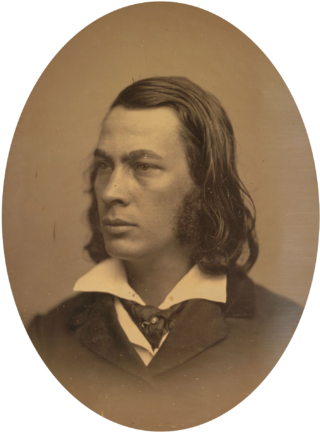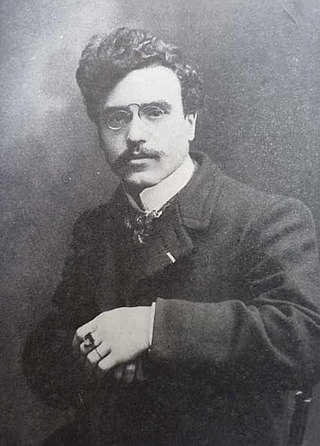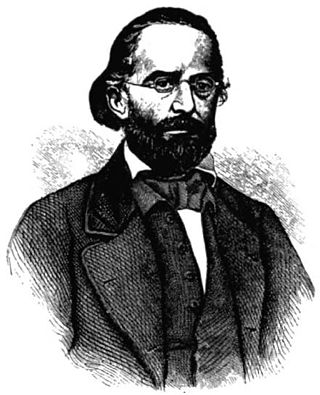Léo Malet was a French crime novelist and surrealist.
Fantastique is a French term for a literary and cinematic genre and mode that is characterized by the intrusion of supernatural elements into the realistic framework of a story, accompanied by uncertainty about their existence. The concept comes from the French literary and critical tradition, and is distinguished from the word "fantastic", which is associated with the broader term of fantasy in the English literary tradition. According to the literary theorist Tzvetan Todorov, the fantastique is distinguished from the marvellous by the hesitation it produces between the supernatural and the natural, the possible and the impossible, and sometimes between the logical and the illogical. The marvellous, on the other hand, appeals to the supernatural in which, once the presuppositions of a magical world have been accepted, things happen in an almost normal and familiar way. The genre emerged in the 18th century and knew a golden age in 19th century Europe, particularly in France and Germany.

Marie-Joseph "Eugène" Sue was a French novelist. He was one of several authors who popularized the genre of the serial novel in France with his very popular and widely imitated The Mysteries of Paris, which was published in a newspaper from 1842 to 1843.

Paul Henri Corentin Féval, père was a French novelist and dramatist.

La Comédie humaine is Honoré de Balzac's 1829–48 multi-volume collection of interlinked novels and stories depicting French society in the period of the Restoration (1815–30) and the July Monarchy (1830–48).

The Mysteries of Paris is a novel by the French writer Eugène Sue. It was published serially in 90 parts in Journal des débats from 19 June 1842 until 15 October 1843, making it one of the first serial novels published in France. It was an instant success and singlehandedly increased the circulation of Journal des débats. It founded the "city mysteries" genre, spawning many imitations.

Jules-Henri Vernoy de Saint-Georges was a French playwright, who was born and died in Paris. He was one of the most prolific librettists of the 19th century, often working in collaboration with others.

George Lippard was a 19th-century American novelist, journalist, playwright, social activist, and labor organizer. He was a popular author in antebellum America.

George William MacArthur Reynolds was a British fiction writer and journalist.

Jean de La Hire was a prolific French author of numerous popular adventure, science fiction and romance novels.

Paul Auguste Jean Nicolas Féval was a French adventure novelist, like his father Paul Féval, père. He was the third of eight children and the eldest son of Paul Féval, who was 42 years old and at the height of his success when Paul Féval fils was born.

The Mysteries of London is a "penny blood" or city mysteries novel begun by George W. M. Reynolds in 1844. Recent scholarship has uncovered that it "was almost certainly the most widely read single work of fiction in mid-nineteenth century Britain, and attracted more readers than did the novels of Dickens, Bulwer-Lytton or Trollope." There are many plots in the story, but the overarching purpose is to reveal different facets of life in London, from its seedy underbelly to its over-indulgent and corrupt aristocrats. Reynolds wrote the first two series of this long-running narrative. Thomas Miller wrote the third series and Edward L. Blanchard wrote the fourth series of this immensely popular title.

Henry Boernstein [in Europe, Heinrich Börnstein] was a German revolutionary who served as the publisher of the Anzeiger des Westens in St. Louis, Missouri, the oldest German newspaper west of the Mississippi River. He was also a political activist, author, soldier, actor and stage manager, and was briefly yet closely acquainted with Karl Marx during his tenure as publisher of the radical newspaper Vorwärts. He played a major role in keeping Missouri in the Union at the start of the Civil War.

Antoinette Henriette Clémence Robert was a French writer of historical fiction, poetry, non-fiction, stage plays, and short stories. From 1855 to 1870, she and Virginie Ancelot were the most popular novelists of the roman populaire genre. She published much of her work as Clémence Robert.

Xavier Henri Aymon Perrin, Count of Montépin was a popular French novelist.

Pierre Adrien Decourcelle was a French writer and playwright.

The Mysteries of Paris is a 1935 French historical drama film directed by Félix Gandéra and starring Lucien Baroux, Madeleine Ozeray and Marcelle Géniat. It is based on the novel The Mysteries of Paris by Eugène Sue. The film's sets were designed by the art directors André Barsacq and Robert Gys.
The Mysteries of Paris is a 1922 French silent serial film drama directed by Charles Burguet and starring Huguette Duflos and Georges Lannes.

The Quaker City; or, The Monks of Monk Hall is a city mystery novel by Philadelphia writer George Lippard, first published in 1845.
The popular novel—or popular literature, also known as paraliterature—refers to literary productions that reach a wide readership, which developed during the 19th century primarily due to the decrease in printing costs, the emergence of the first press groups, and literacy. This genre is originally concurrent with the Industrial Revolution and a sociology of reading, which practice could only democratize with the appearance of leisure time in a context of progressive urbanization.















